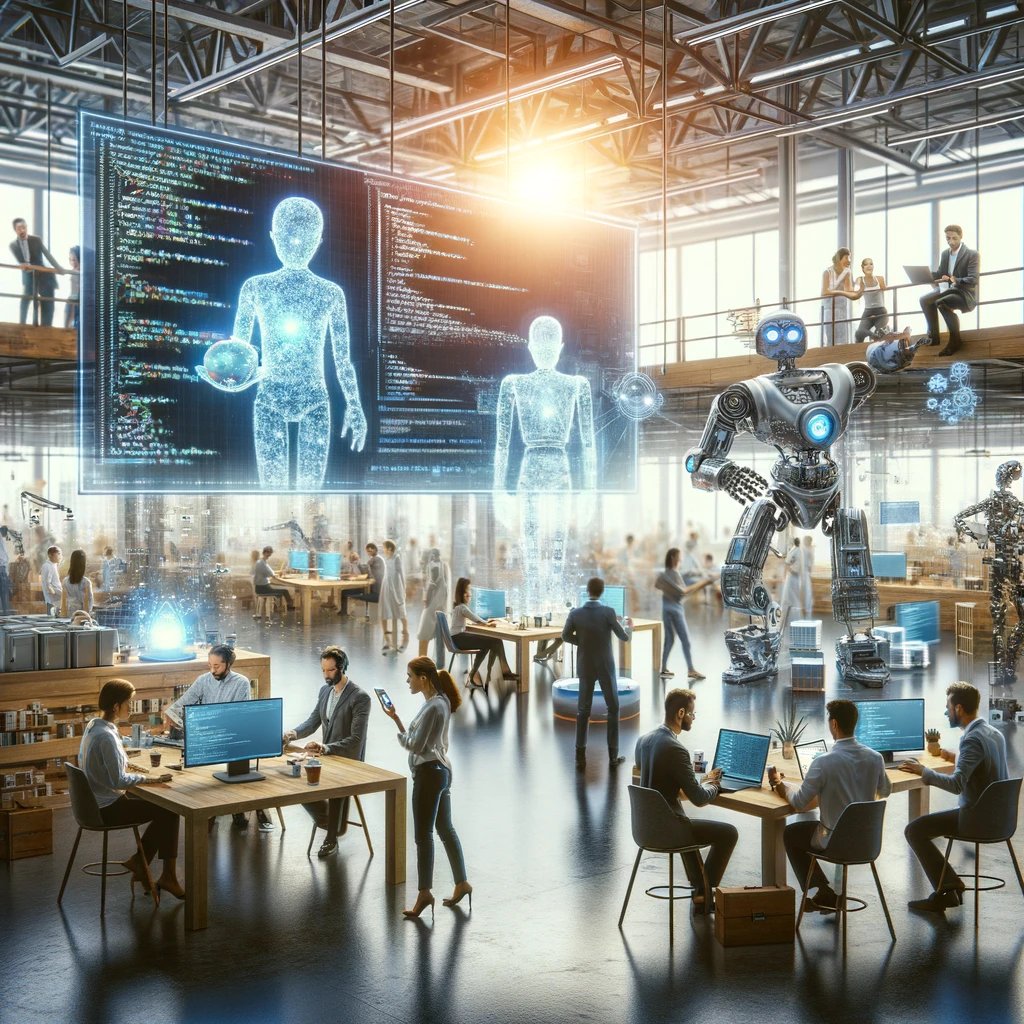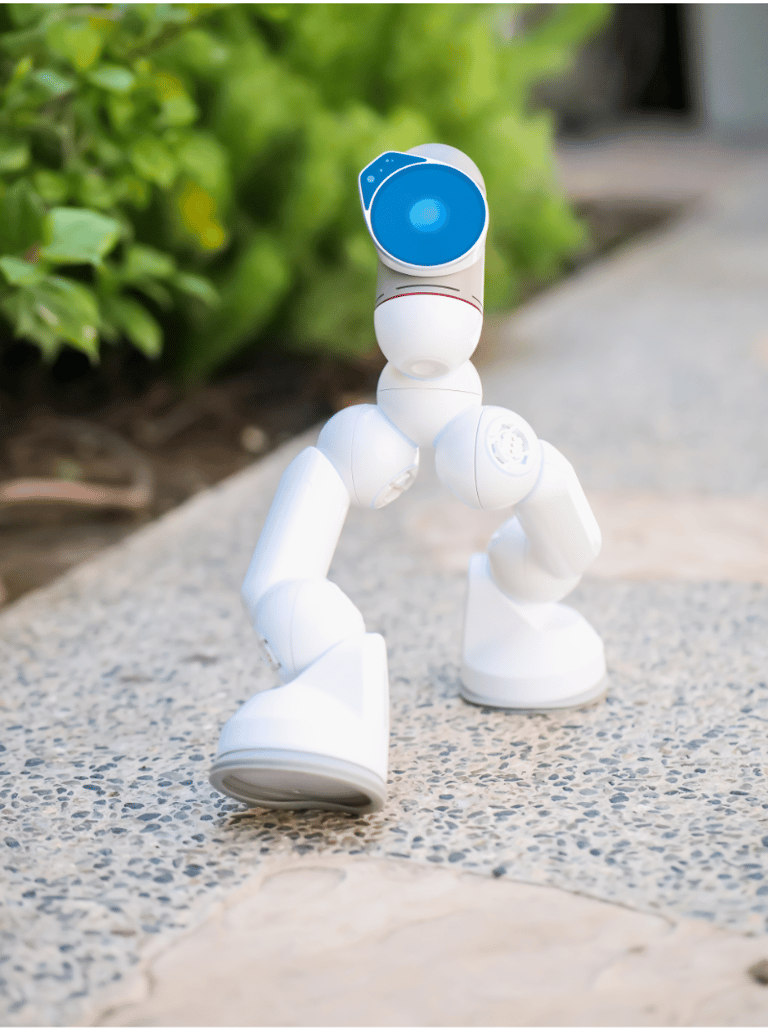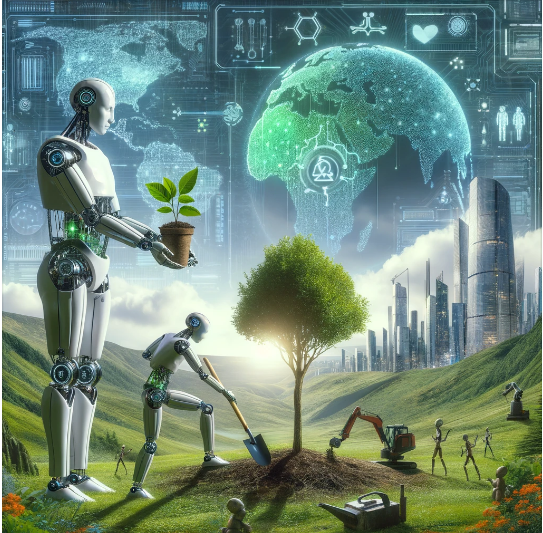How AI and Robotics Are Shaping the Future of Work: Reducing Under-Employment Worldwide
ECONOMIC VISION
2/25/20244 min read


There is much ado about how AI and humanoid Robots will change the landscape of the future workforce. Some may fear that these technological advancements will disrupt employment and many more are optimistic about opportunity of better employment scenario.
But between these oscillations, less consideration has been put into economic discussions that how AI and Robots can resolve problem of under-employment in resilient economy?
The reality is that these technologies hold the potential to address one of the most persistent challenges in modern economies: under-employment. Unlike unemployment, under-employment—a scenario where individuals work less than they wish to or are overqualified for their current roles—remains a nuanced problem, intricately linked to economic health, productivity, and individual well-being.
Historical Context and Lessons Learned
History of industrialization of the economy has proven that a new technology is a net creator of employment, though it goes into complex process of job displacement, transformation, and creation. For Example, the introduction of the personal computer, the internet, and mobile technology each triggered initial fears of job losses, only to subsequently open new avenues for employment and economic growth.
It is clear that the technological disruption, while initially disrupting, eventually leads to a more diversified and enriched job market. The key lies in adaptation and resilience, both at the individual and system levels.


The Promise of AI and Robotics in Addressing Under-employment
AI and robotics offer unprecedented opportunities to enhance productivity, create new job categories, and importantly, address under-employment.
It has reputation to imitate humans in best possible way, a feat never achieved before whenever a new era of technology was introduced.
They achieve this through several processes -
1. Automation of Repetitive Tasks:
By taking over routine and repetitive tasks, AI and robotics free human workers to engage in more complex, creative, and fulfilling roles. This shift can best reduce under-employment by allowing individuals to utilize their full skill sets and capabilities.
2.Creation of New Industries and Job Categories:
Like internet led to the creation of entirely new industries, a new concept of economy - Digital Public Infrastructure (DPI) was created, AI and robotics are achieving same distinction. AI led economy creating many new industrial sectors like autonomous transportation and personalized medicine. Like DPI, AI-PI (Artificial Intelligence Public Infrastructue) could emerge in future to drive new economy.
3.Enhancing Economic Resilience:
By increasing productivity and efficiency, AI and robotics can contribute to stronger, more resilient economies capable of providing more and better employment opportunities. This resilience is crucial in addressing both cyclical and structural under-employment.


Challenges and Considerations
The potential of AI and robotics to alleviate under-employment is not without challenges. One of the foremost challenges is the need for a skilled workforce. Only a skilled workforce is capable of thriving in a technologically advanced economy. This makes it case for a comprehensive overhaul of educational systems which can prioritize STEM (science, technology, engineering, and mathematics) education, lifelong learning, and re-skilling initiatives.
Also, there is a pressing need for inclusive and innovative policies that ensure the benefits of AI and robotics are broadly shared and co-opted. This includes addressing the digital divide, promoting equal access to technology, and implementing social safety nets for those displaced during transitional periods.
Policy Recommendations and Future Directions
A multipronged approach is mandatory to utilise the potential of AI and robotics in resolving under-employment.
This includes: Investment in technological adaptability in Education and Job Training : Governments and private entities should invest in education and training programs that prepare the workforce for the future. AI based education and training programs not only includes technical skills but also soft skills like problem-solving and adaptability.
Promoting Innovation and Entrepreneurship: Creating an environment that enhances innovation and entrepreneurship through AI and robotics can introduce new industries and job opportunities.
Inclusive Policies for AI and Robotics:
Policies must aim to ensure that the benefits of AI and Robotics and its innovations are distributed to all. Attention to regions and communities at risk of being left behind must be given as, if the technology does not fill the gap created by social disparity, it can lead to catostrophy for mankind.
Championing Public-Private Partnerships:
Partnering between governments, the private sector, and the educational institutions can give pace to the development of relevant skills and ensure a smooth and meaningful transition into new employment opportunities.
Conclusion
The process of integrating AI and robotics into our economic transition and addressing under-employment is complex and multidimensional and challenging. But, as lessons from economic history and the inherent potential of these technologies tell us, it is a worth excercise to undertake. With depth planning, promoting the skills in human capital, and justifiable policies, AI and robotics can play an important role in creating a scenario where under-employment is significantly mitigated. The key to achieve this goal lies in our collective ability to adapt, innovate, and ensure that technological progress serves as a ladder to economic and social advancement for all.
Who We Are:
The Economic Nations champions global unity through economic collaboration, focusing on sustainable growth, reducing inequalities, and enhancing global relationships for mutual prosperity and peace.
Contacts
enquiry@economicnations.org
(xx) 98-11-937-xxx (On verification)
